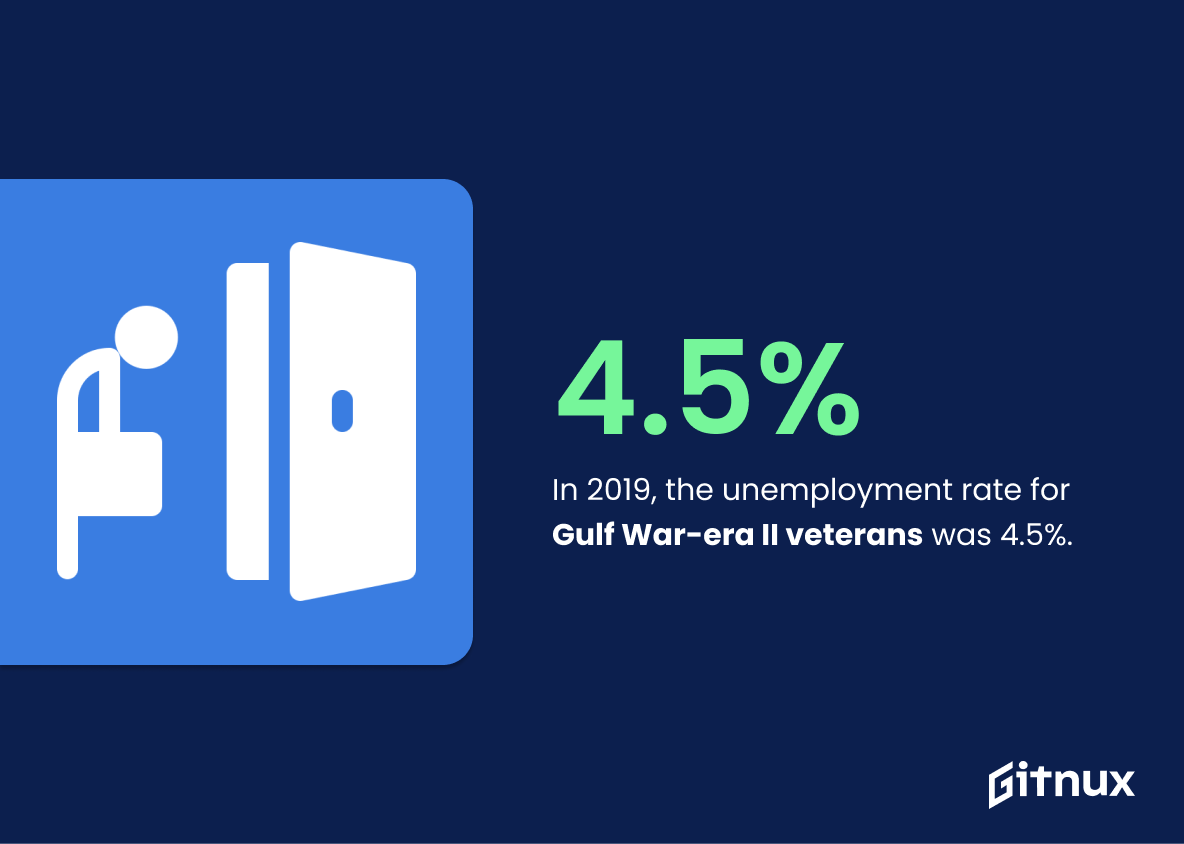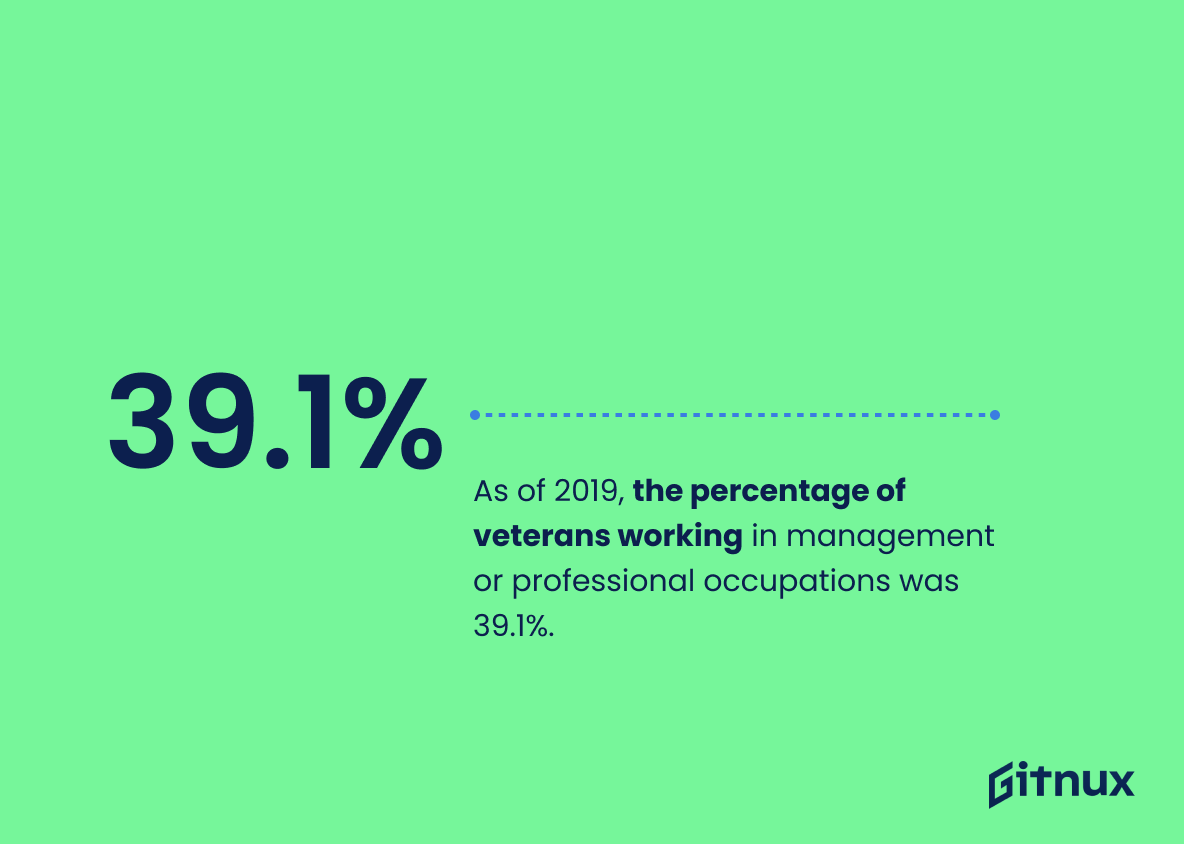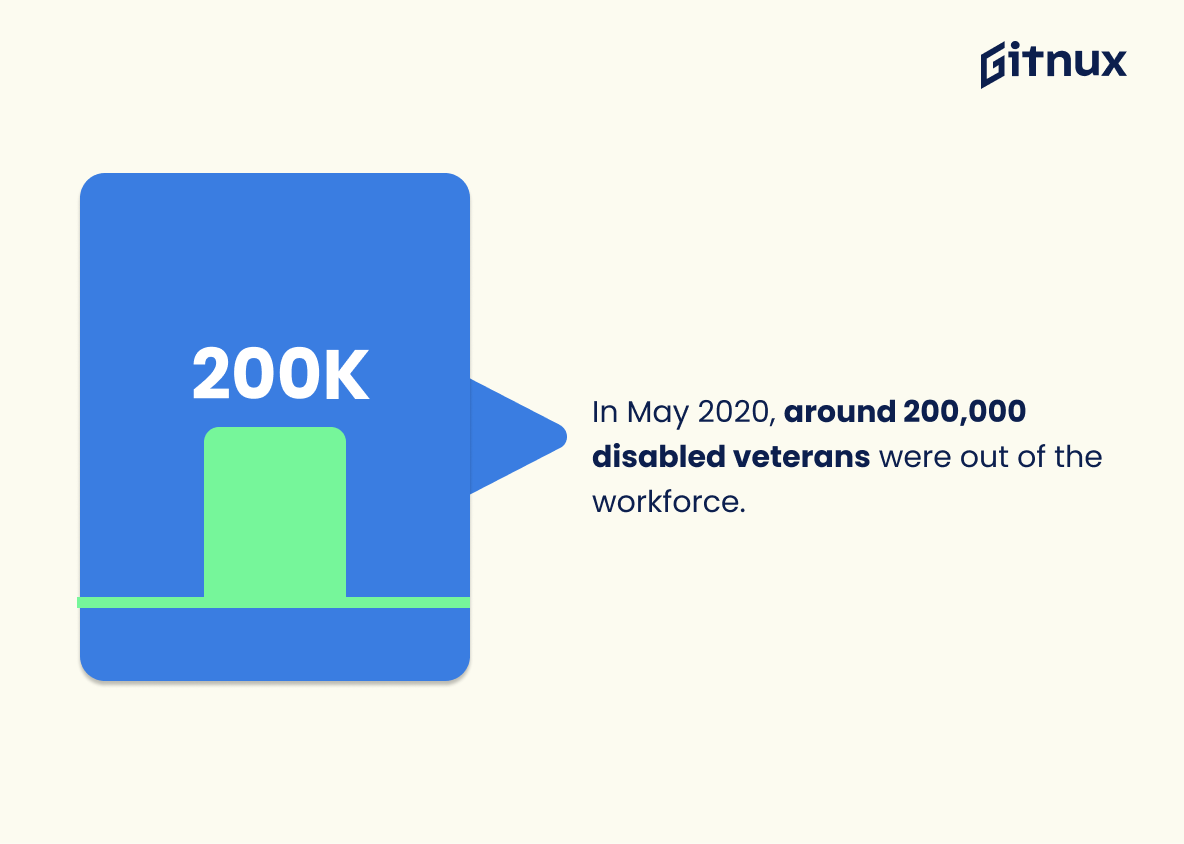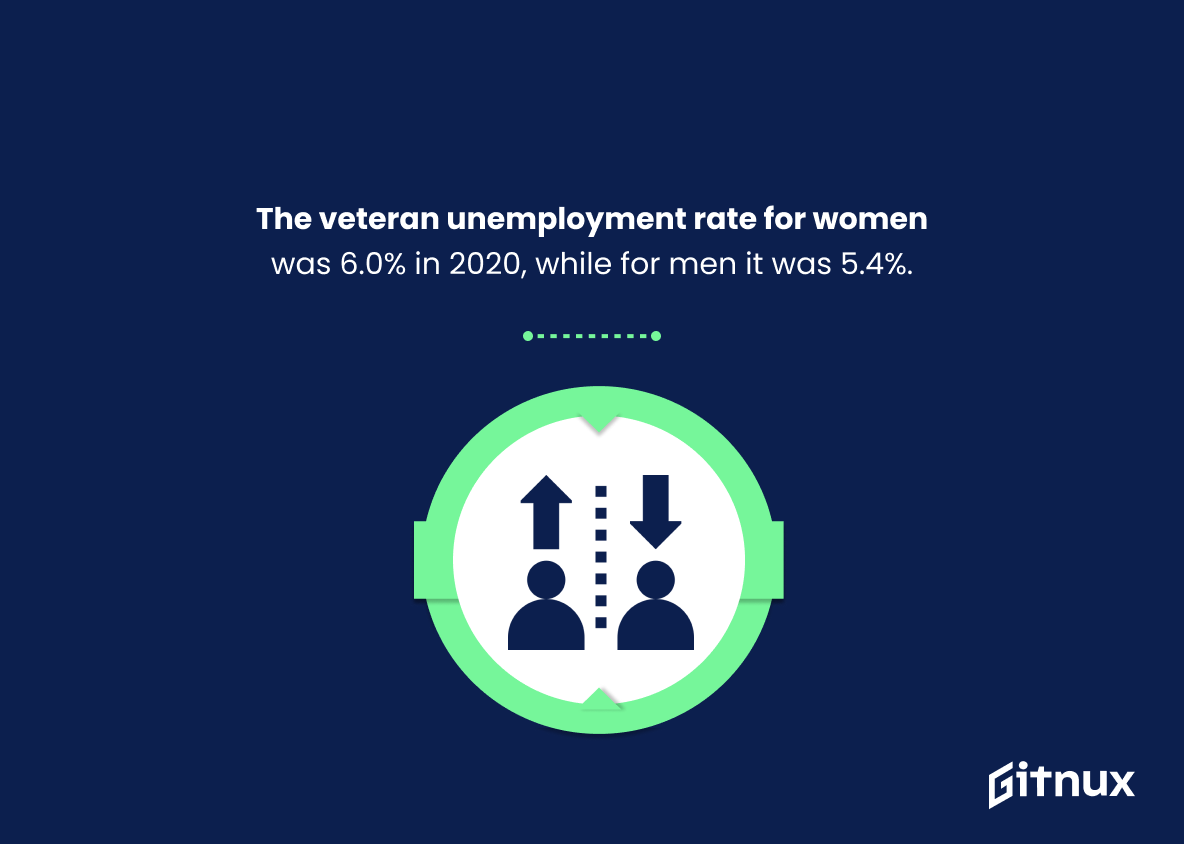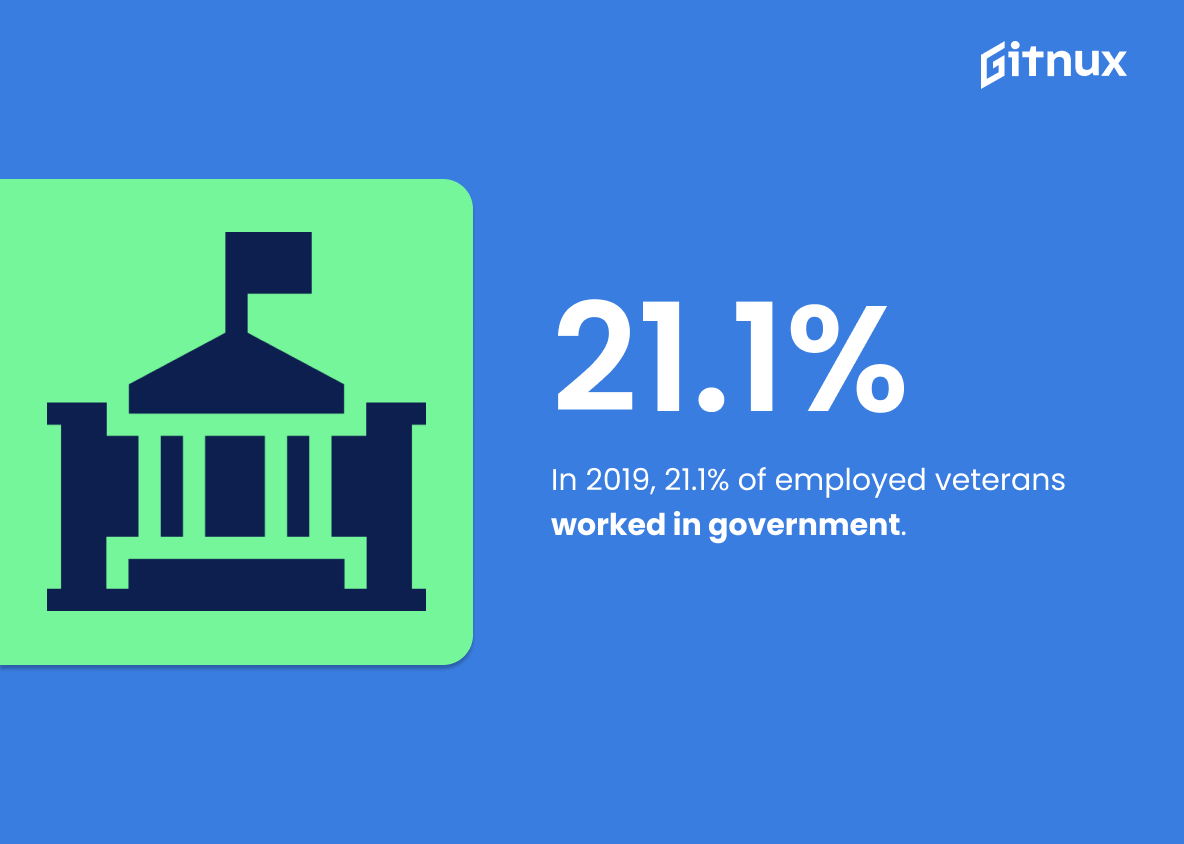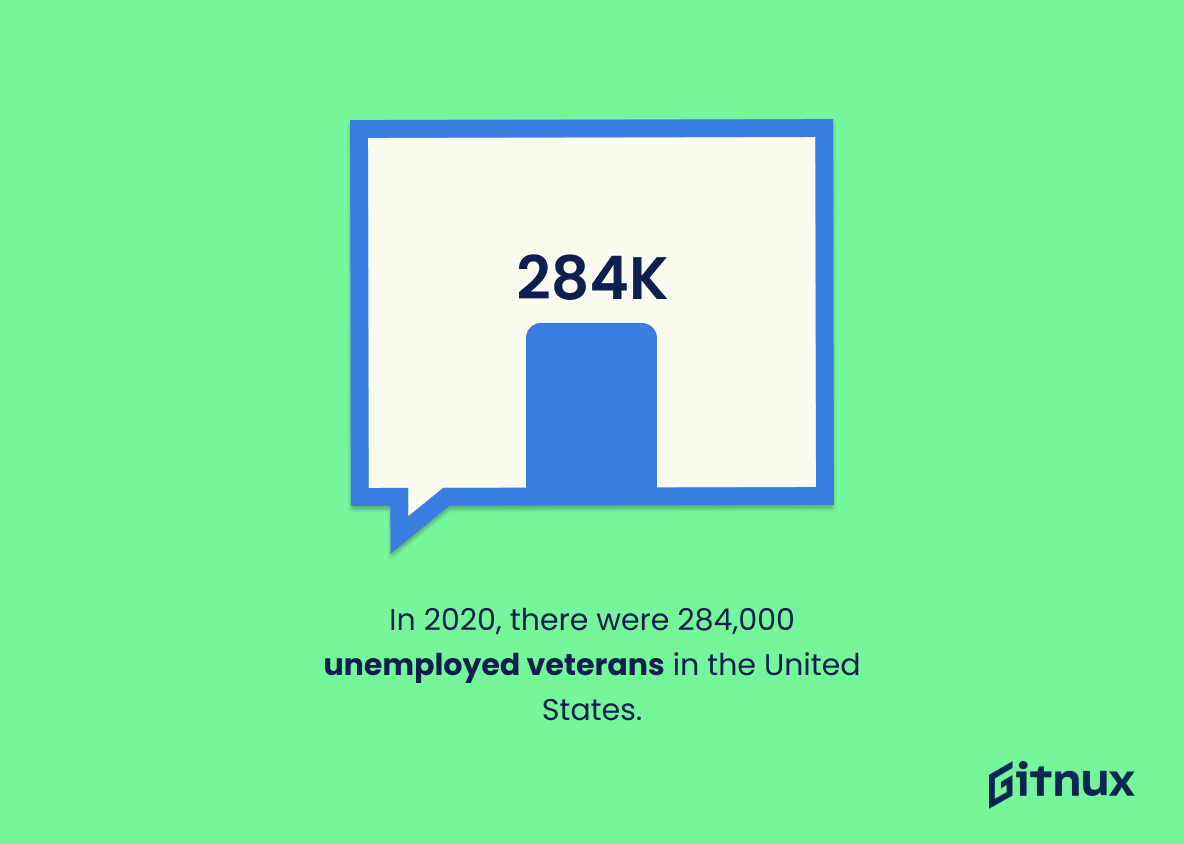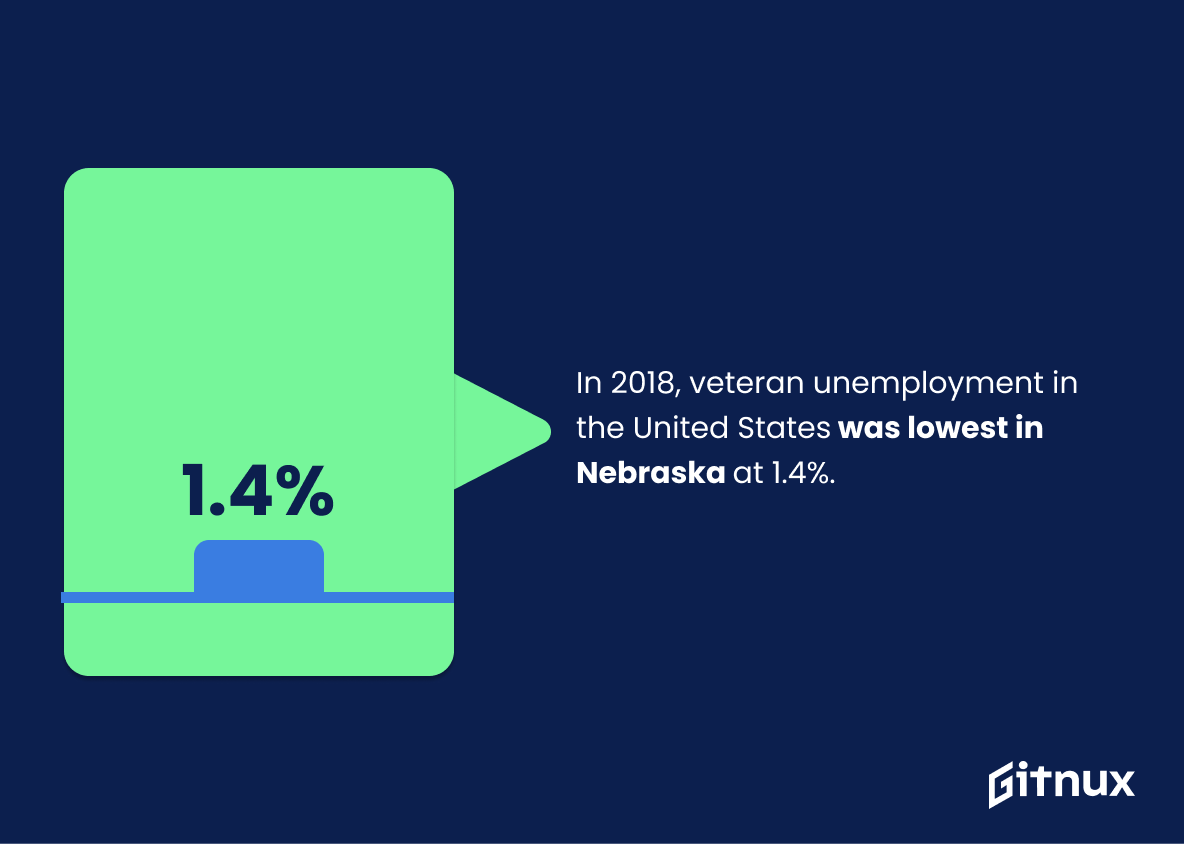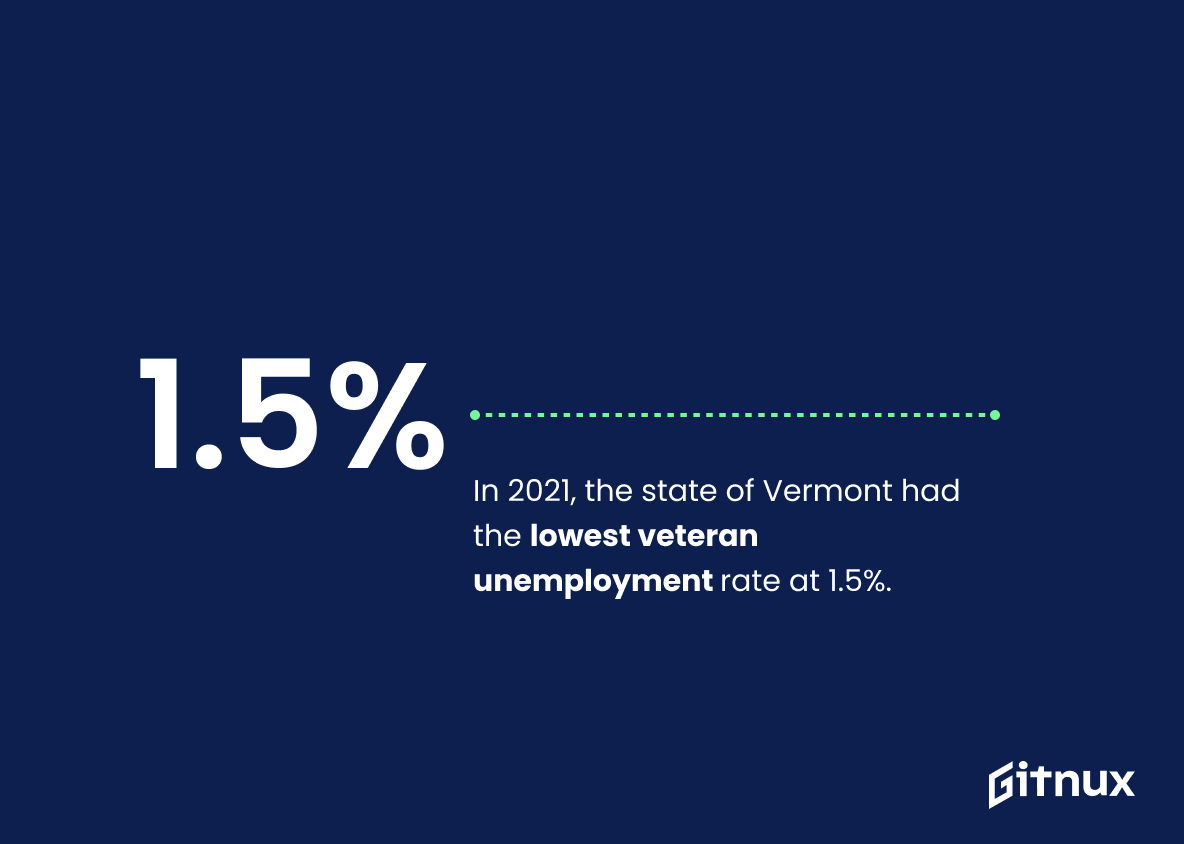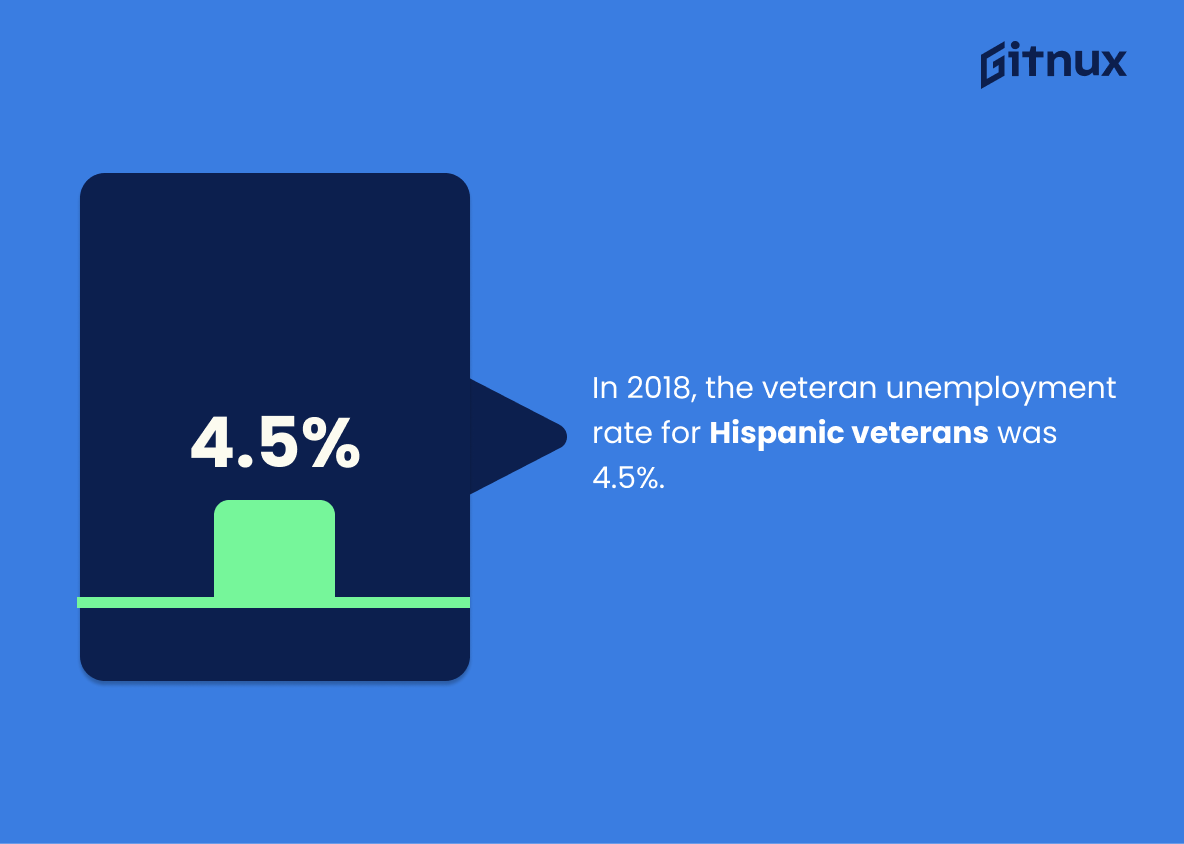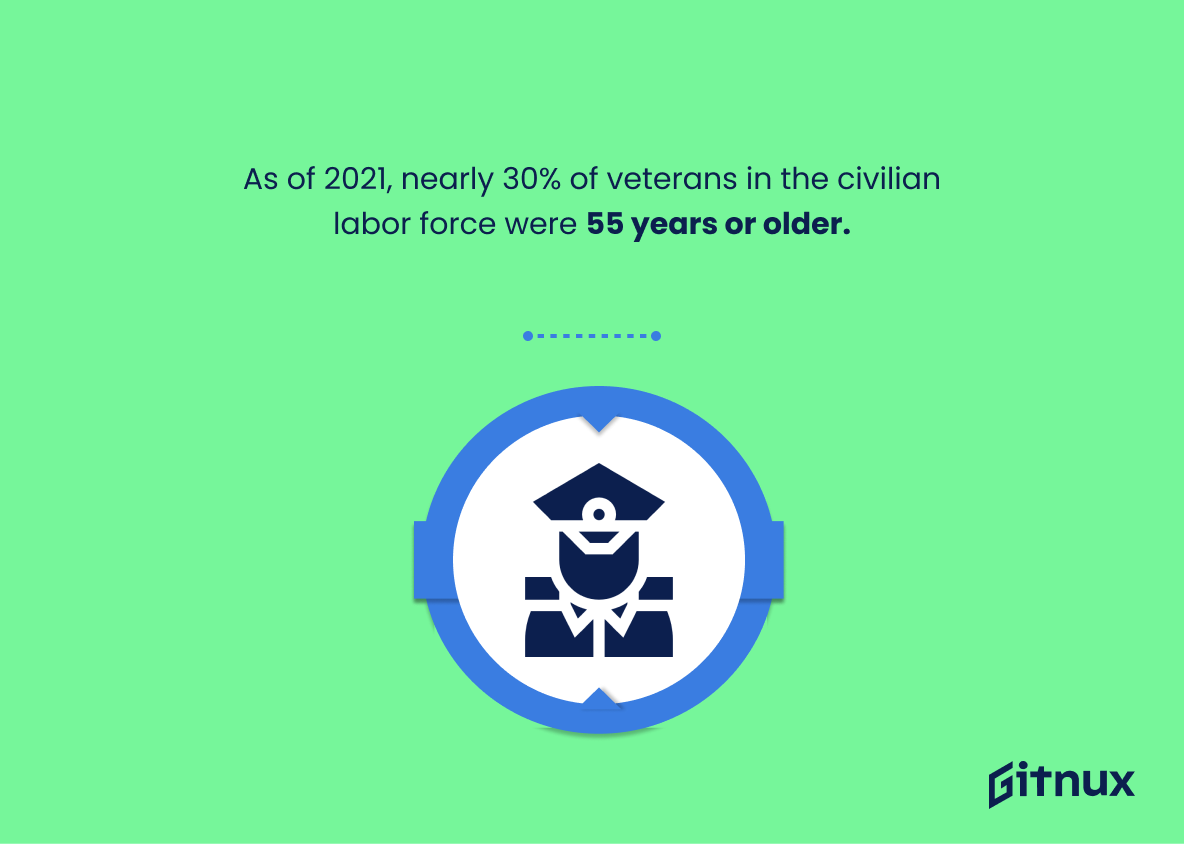The veteran unemployment rate has been a topic of discussion for many years. In 2020, the overall veteran unemployment rate was 5.5%, and in December it decreased to 5.3%. By September 2021, this number had dropped even further to 3.9%. Gulf War-era II veterans experienced an unemployment rate of 4.5% in 2019, while 69% reported facing difficulties transitioning into civilian life after service which can lead to higher rates of joblessness among veterans as a whole population group.
In terms of employment opportunities available for veterans, 39.1% worked in management or professional occupations as of 2019 and 21.1% were employed by local, state or federal government agencies that same year according to statistics from the Bureau Of Labor Statistics (BLS). Additionally there were 284 thousand unemployed veterans across America at the end of 2020 with 200 thousand having some form disability not participating in labor force activities during May 2020 period according to VA data sources . The gender gap is also present when looking at these numbers; 6 percent female versus 5 point four percent male veteran unemployment rates respectively during last year’s calendar time frame.. Furthermore 52 % who participated Vocational Rehabilitation & Employment program obtained jobs , 1 point 4 % being lowest recorded figure within Nebraska State boundaries back 2018 whereas Vermont held similar record one year later with 1 point five percentage points . As per BLS report median weekly earnings stood $1009 dollars amongst males compared 938 dollars earned by their female counterparts whilst 11 dot 8 % Post – 9/11 vets found themselves working STEM related fields come 2019 .. Finally nearly 30 percent aged 55+ are part US Civilian Labour Force today based on recent House Veterans Affairs Committee hearing charter document released earlier this month .
Veteran Employment Statistics Overview
“In 2019, the unemployment rate for Gulf War-era II veterans was 4.5%.”
This statistic is significant in the context of Veteran Employment Statistics because it demonstrates the success of Gulf War-era II veterans in finding employment. It shows that despite the challenges they may face, these veterans are able to find meaningful work and contribute to the economy.
“69% of veterans report they faced a difficult transition to civilian life after service, resulting in higher unemployment rates.”
This statistic is a stark reminder of the struggles that veterans face when transitioning to civilian life. It highlights the need for more resources and support to help veterans find employment and successfully reintegrate into society. It also serves as a call to action for employers to recognize the value of veterans and create more opportunities for them.
“As of 2019, the percentage of veterans working in management or professional occupations was 39.1%.”
This statistic is a testament to the success of veterans in the professional world. It shows that veterans are not only capable of finding employment, but also of excelling in their chosen fields. This statistic is a powerful reminder that veterans are an invaluable asset to the workforce and should be given the opportunity to pursue their dreams.
“In May 2020, there were approximately 200,000 veterans with a service-connected disability who were not in the labor force.”
This statistic is a stark reminder of the challenges that veterans with service-connected disabilities face when it comes to employment. It highlights the need for more resources and support to help these veterans find meaningful employment and reintegrate into civilian life.
“The veteran unemployment rate for women was 6.0% in 2020, while for men it was 5.4%.”
This statistic is a stark reminder of the gender disparities that exist in veteran employment. It highlights the fact that women veterans are facing a higher rate of unemployment than their male counterparts, a disparity that needs to be addressed. It is a call to action for employers to recognize the unique skills and experiences that women veterans bring to the workplace and to create more equitable opportunities for them.
“As of 2019, the percentage of employed veterans who worked for the local, state, or federal government was 21.1%.”
This statistic is significant in the context of Veteran Employment Statistics as it provides insight into the number of veterans who are employed by the government. It highlights the importance of government-sponsored employment opportunities for veterans, and the impact that these jobs have on the veteran community. Additionally, it serves as a reminder of the need for continued support for veterans in the workforce.
“In 2020, there were 284,000 unemployed veterans in the United States.”
This statistic is a stark reminder of the reality that many veterans are facing in the United States. It is a sobering reminder of the need for more resources and support for veterans who are struggling to find employment. It is a call to action for those who are in a position to help veterans find meaningful employment and to ensure that they have the necessary resources to do so.
“52% of veterans who participate in the Vocational Rehabilitation and Employment program obtain employment.”
This statistic is a testament to the success of the Vocational Rehabilitation and Employment program in helping veterans find employment. It shows that the program is providing meaningful assistance to veterans in their job search, and that it is making a positive impact on veteran employment.
“In 2018, veteran unemployment in the United States was lowest in Nebraska at 1.4%.”
This statistic is a testament to the success of Nebraska in providing employment opportunities to veterans. It highlights the state’s commitment to helping veterans transition into civilian life and demonstrates the effectiveness of their efforts. It also serves as an example for other states to follow in order to reduce veteran unemployment.
“As of 2019, the median weekly earnings for male veterans were $1,009, while female veterans earned $938.”
This statistic serves as a stark reminder of the gender wage gap that persists in the veteran community. It highlights the fact that female veterans are earning significantly less than their male counterparts, even after having served their country. This discrepancy in earnings is an issue that needs to be addressed in order to ensure that all veterans are able to receive the same level of financial security and stability.
“In 2020, the unemployment rate for Black or African American veterans was 9.1%.”
This statistic is a stark reminder of the disparities that exist in veteran employment. It highlights the need for more equitable access to job opportunities for Black or African American veterans, and serves as a call to action for employers to create more inclusive hiring practices.
“In 2018, the percentage of employed Post-9/11 veterans who held jobs in STEM (Science, Technology, Engineering, and Mathematics) occupations was 11.8%.”
This statistic is significant in the context of Veteran Employment Statistics because it highlights the success of Post-9/11 veterans in the STEM field. It demonstrates that veterans are capable of succeeding in a highly competitive and rapidly changing field, and that they are able to make meaningful contributions to the STEM workforce. This statistic is a testament to the dedication and hard work of veterans, and it serves as an inspiration to other veterans who may be considering a career in STEM.
“In 2021, the state of Vermont had the lowest veteran unemployment rate at 1.5%.”
The fact that Vermont has the lowest veteran unemployment rate in 2021 is a testament to the state’s commitment to providing meaningful employment opportunities for veterans. It is a shining example of how states can prioritize veteran employment and create a supportive environment for those who have served our country.
“As of 2019, veterans made up nearly 5% of the U.S. civilian labor force.”
This statistic is a powerful reminder of the impact veterans have on the U.S. civilian labor force. It highlights the importance of recognizing and supporting veterans in the workforce, and the need to ensure that veterans have access to the resources and opportunities they need to succeed.
“In 2018, the veteran unemployment rate for Hispanic veterans was 4.5%.”
This statistic is significant in the context of Veteran Employment Statistics because it highlights the success of Hispanic veterans in finding employment. It demonstrates that Hispanic veterans are succeeding in the job market despite the challenges they may face. This statistic is a testament to the hard work and dedication of Hispanic veterans, and it serves as an inspiration to other veterans who may be struggling to find employment.
“As of 2021, nearly 30% of veterans in the civilian labor force were 55 years or older.”
This statistic is a telling indication of the age of veterans in the civilian labor force, highlighting the importance of providing employment opportunities for veterans of all ages. It is especially pertinent in the context of a blog post about Veteran Employment Statistics, as it serves to emphasize the need for employers to recognize the value of veteran experience and to create job opportunities for veterans of all ages.
Conclusion
The data shows that veteran unemployment rates have been steadily decreasing since 2020, with the overall rate dropping from 5.5% to 3.9%. Women veterans had a slightly higher unemployment rate than men in 2020 at 6%, while Black or African American veterans experienced an even greater disparity of 9.1%. Post-9/11 veterans also faced higher levels of unemployment compared to other eras, but their numbers decreased significantly over the past year as well. Additionally, nearly 30% of employed veterans are 55 years old and older and 39.1% work in management or professional occupations; however, 69% report facing difficulties transitioning into civilian life after service which can lead to increased joblessness among this population group. The Vocational Rehabilitation and Employment program has helped many find employment opportunities (52%), while Nebraska was found to be the state with lowest veteran unemployment rate in 2018 at 1.4%.
References
0. – https://www.bls.gov
1. – https://www.callutheran.edu
2. – https://www.va.gov
3. – https://www.veterans.house.gov
